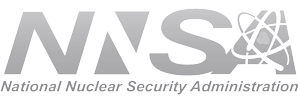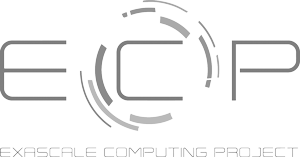Photo © 2010-2019 The Regents of the University of California, Lawrence Berkeley National Laboratory.
Find out how scientists at Lawrence Berkeley National Laboratory have approached producing reliable scientific software in the modern research context with contributors from multiple labs, universities and disciplines, spread across multiple timezones.
Software engineering and distributed teams
Modern science depends heavily on computing and computer software. The correctness, the efficiency and, more generally, the quality of the software are instrumental to scientific advancement. Software engineering — "the application of a systematic, disciplined, quantifiable approach to the development, operation, and maintenance of software" [IEEE Standard Glossary of Software Engineering Terminology, IEEE std 610.12-1990, 1990] — is the major tool available to create and maintain software quality. Advances in software engineering, such as "agile" processes and the "devops" revolution, have been important factors in the creation of scientific software.
In our work, we are often in the position of leading, or helping to lead, the software engineering efforts of medium-sized, distributed, multidisciplinary scientific project teams. By medium-sized, we mean from about 10 to 50 people; by distributed, we mean that the team comprises people from multiple institutions that are geographically separated and do not have a common management structure — typically a few universities and one or more national laboratories; and by multidisciplinary, we mean the team is usually composed of people who come from scientific or engineering backgrounds other than computer science or software engineering, with limited experience writing software for use outside their own or their team’s projects. We have often tried to apply software engineering and project management approaches from industry in this milieu but always end up frustrated with some of the assumptions about centralized authority, dedicated software engineering effort and incentive.
Challenges facing a medium-sized project
A good example of such a project team is the Institute for the Design of Advanced Energy Systems (IDAES), which was formed in 2016 to develop new advanced process systems engineering (PSE) capabilities. Funded by the DOE Office of Fossil Energy and led by the National Energy Technology Laboratory (NETL), the project's mission is to improve the efficiency and reliability of the existing fleet of coal-fired power plants while accelerating the development of a broad range of advanced fossil energy systems. The IDAES team spans three national laboratories (NETL, Sandia National Laboratories, and Lawrence Berkeley National Laboratory) and three universities (Carnegie Mellon University, West Virginia University, and Notre Dame University). Most of the team is spread in the two Pennsylvania locations, but half a dozen participants are present in California and New Mexico each, in addition to the professors and several graduate students present in the various universities. From a software engineering perspective, the goal is to build a software package that is capable of simulating important aspects of power plants and power grids. The eventual target users are power plant operators and power grid designers, with a current user base primarily of researchers, graduate students and the developers themselves.
A three-pronged approach
While the IDAES project runs functionally as a unit, there are sub-hierarchies of control in each national laboratory and university that set local priorities within the framework of the project deliverables. And although most of the effort is being spent on new software to perform chemical process engineering, significant effort is devoted to adding related capabilities to an existing software package, Pyomo, that predates IDAES and continues to be developed at Sandia National Laboratories. This size and variation in scope make project coordination a challenge, but the situation is not unusual in our projects.
Although the specific approaches to increasing overall team productivity through software engineering vary across projects, three elements of what we are doing for IDAES are, we believe, generally applicable to projects with this kind of mix of institutions, disciplines and scale: weekly whole-team developer meetings, incrementally better automation, and “soapboxing” (including software engineering in official goals & deliverables).
Not just another meeting
Many styles of meetings have been discussed in recent years with respect to software development teams, most commonly the daily “standup” meetings combined with some semi-weekly longer “retrospective” meetings. Neither of these fits what we believe is a unique set of constraints of our scientific environment, where we have
- no common authority structure (due to the multi-institutional nature of our collaborations);
- contributors split across timezones, sometimes continents; and
- contributors split across multiple unrelated projects with no inherent interest in accommodating one another.
As a result, people generally have limited slots in their calendar that they can guarantee are open on a regular basis. However, one weekly hour-long meeting is generally possible and serves multiple purposes, by
- letting people “context-switch” back to what they promised a mere week ago to have done;
- providing an open forum for cross-cutting issues or questions that don’t get easily addressed in subgroup meetings (because, of course, these also exist);
- presenting some opportunity to disseminate practices and educate new team members; and
- building camaraderie through regular (virtual) contact.
For all these purposes, it is essential that this meeting be open to the entire developer team — however daunting that must seem at first. You can think of this meeting as a little bit like going to a weekly religious service or tight-knit social group (church, temple, book group, bicycling club, etc.) where the enthusiasm for the event may vary week to week but the overall experience is as much about the customs and connections as the content.
Specifically what occurs during these meetings will probably depend on your development practices and tools. But in general we have found that two main activities are critical: an open agenda of issues that people can edit before the meeting and a standard task that focuses attention on the active development across the project. For many projects, a modified Kanban “project board” approach provides an excellent focus because it presents an easily summarized list of things completed, in progress, and abandoned. Whoever is leading the meeting — and of course there should be just one person who leads it, since anything else with 20+ people on the line would be chaos — can, in the absence of any other topics, simply walk through all issues and categorize them against release or other timelines. Almost always, this simple practice will bring up interactions between the different pieces of ongoing work that would have otherwise been discovered much later, if at all.
An incremental approach to automated testing
Between meetings, the best friend of overall team productivity is automated practices, and in particular automated tests. Although few people disagree with this idea in principle, the truth is that getting a large suite of automated tests to work and keeping them working in the face of constantly changing software, personnel and dependencies is nontrivial. Of course, most of the tests must be written by people who understand the mathematics and science of the code being tested (or, in the case of infrastructure code, the computer science principles of the code). However, we must face the reality that this is a significant request of someone’s time and is competing with the next publication or result, which the individual may be encouraged to prioritize. Our position is that the right approach to take to this problem is incremental: (1) help people put in a few tests, but don’t require that they pass; (2) add a requirement that the tests pass before the code is merged, but don’t worry about code coverage or style; (3) start informally checking code coverage and style, but don’t enforce anything; (4) start enforcing low levels of code coverage and basic style rules; and (5) finally — well, honestly we’ve never gotten farther than that. But by doing these in baby steps, and talking about them weekly in the developer meetings, you are building up a culture of testing that will lead to eventually having a robust software environment that is broadly supported by the team.
All told, these meetings serve to address the challenges we face developing software with teams composed of people who are not primarily involved in computing or software engineering and are working together without a common authority. The regular meeting "baby steps approach" both educates and builds consensus simultaneously on the best procedures, practices and tools to adopt. Ideally this approach is driven by demonstrated effectiveness from those with the most software development experience.
Soapboxing
The third element that we think is useful is what we call “soapboxing,” not in the negative sense of grandstanding but in the positive sense of putting key elements of software engineering and development practices where they can gain favorable attention from project management and funders. Probably the least important place for this is grant proposals, since these are read at most once every few years, whereas the message needs to be repeated frequently. One of the best places to try to insert some discussion of software practices (and, by extension, developer productivity) is in project meetings. If your PIs and other project leads need any convincing that software engineering is an important topic, an excellent way to do so is to show them the team engaging in a spirited discussion in a public or semi-public forum. Progress reports and general-audience publications about the project are also opportunities to describe software engineering practices.
The goal: developer productivity
We have spoken largely of social challenges, but of course scientific software also presents numerous technical challenges to developer productivity. We believe that conquering these technical challenges goes hand in hand with reducing the friction of the software engineering environment so that developers in medium-sized teams don’t spend all their time working in silos and unintentionally stepping on each other’s toes and, perhaps most important, so that they feel they are working as a single team no matter how different their technical backgrounds.
Author bios
Dan Gunter leads the Integrated Data Frameworks (IDF) group in the Data Science and Technology department of the Computational Research Division at Lawrence Berkeley National Laboratory. Dan's interests include data management and data processing pipelines in heterogeneous environments, software engineering for distributed multidisciplinary scientific teams and building of usable interfaces to enable scientific exploration. He has led software efforts in projects across multiple domains, collaborating with many science divisions at LBNL as well as with scientific and engineering teams across the Unted Statees and internationally. He also brews a mean cup of coffee.
Keith Beattie is a computer systems engineer at LBNL with experience in bringing modern, open-source software engineering practices to academic and research contexts. His interests are in understanding and addressing the unique challenges in leading multi-institutional, geographically dispersed scientific software development teams while still producing effective and usable software, particularly teams composed of members from scientific but not necessarily software engineering backgrounds. He has worked in industry as a software engineer and release manager and has been at LBNL for the past 20 years. He also tortures local music venue attendees playing bass in rock bands.


